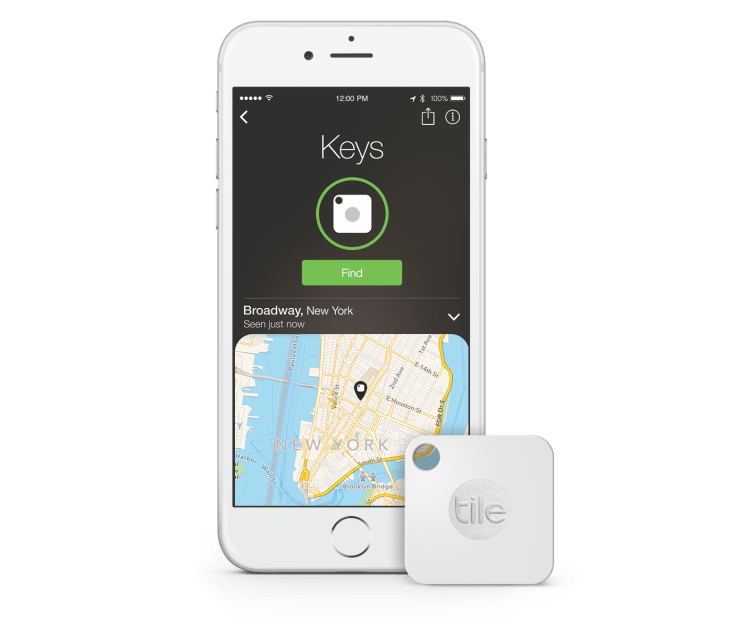
Tile[1], the company that makes connected devices – which you add to keychains, bags, suitcases, laptops, or keep in your wallet in order to track items when they go missing – today announced it has raised a Series B-1 round of new funding, led by Bessemer Venture Partners. In addition, Tile noted it has now hit two major milestones for its business: $100 million in revenue in 2016, and 10 million total units sold.
The new round included participation from existing investors GGV Capital and Khosla Ventures, as well as new investor Lead Edge Capital. To date, Tile has raised $59 million.
The company manufactures two styles of its devices, its original keychain dongle called the Tile Mate, and its thinner device designed to be inserted into wallets, called the Tile Slim. These devices work alongside a mobile application which can be used to locate the missing items. If you can’t find your keys, for example, you launch the app and hit the “Find” button, and they’ll ring when you’re within Bluetooth range.

However, if you’ve lost your item somewhere further away, Tile leverages its community of users as a sort of crowd-sourced lost item finder. That is, when another Tile user comes within range of your lost item, you’ll get an alert on your smartphone with its current location.
This now sizable community is Tile’s biggest advantage over competitors who make similar Bluetooth-connected dongles.
The company also last year launched[2] its own platform[3] which makes its technology stack, app, and network available to partners for use in their own products.

“Not only is Tile solving a very real problem for millions of people every day, but their growth trajectory is also extremely exciting,”...
Read more from our friends at TechCrunch
While many precious metals investors realize the massive amount of paper trading leverage taking place in the gold market, they should see what is going on in the silver market. In a previous article, I provided data showing that an amazing $9.8 trillion of notional gold paper trading took place on the world’s exchanges in 2016 versus $42 billion in actual physical gold investment. This was a paper to physical ratio of 233 to 1.
However, the amount of paper trading leverage in the silver market is much higher than that.
But, before I get into the specifics of the paper silver market trading leverage, let’s take a look at the pathetic amount of physical silver investment versus Central Bank asset purchases. According to the data in the recently released 2017 World Silver Survey, total physical silver investment for 2016 came in at a whopping $4.4 billion:

That’s correct. When we add up all the global silver investment demand last year, it adds up to a measly $4.4 billion. It was nearly ten times less than all physical gold investment in 2016. The analysts who wrote 2017 World Silver Survey, arrived at the $4.4 billion figure by using the following data:
Global Silver Investment 2016 (in million oz – Moz):
- Physical Bar Investment = 83.6 Moz
- Official Coins & Medals = 123.2 Moz
- ETP (ETF) Inventory Build = 47 Moz
- Grand Total Silver Investment = 253.8 Moz
By adding up total Physical Bar investment of 83.6 Moz, Official Coins & Medals of 123.2 Moz and ETP (ETF) Inventory Build of 47 Moz and then multiplying it by the average silver spot price of $17.14, it totaled $4.4